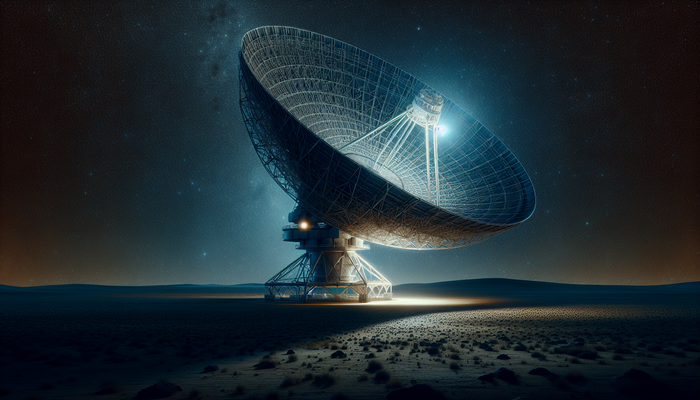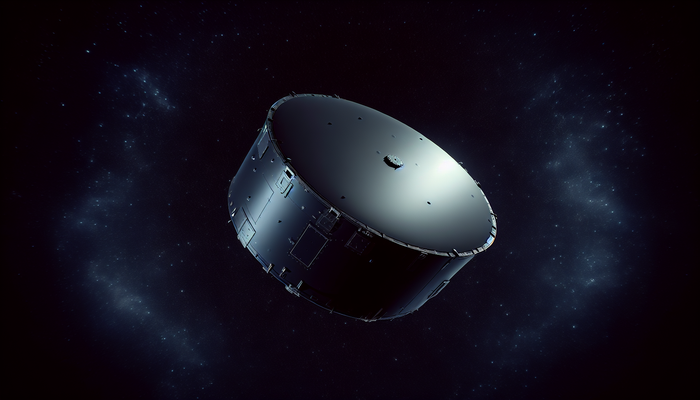Examining NASA Hush-Up Claims

By Amara Okafor, Ufologist
The phrase "NASA cover-up" conjures images of shadowy government agents hiding alien bodies or suppressing evidence of extraterrestrial spacecraft. But the reality of information control at America's space agency exists on a much broader spectrum – from legitimate national security concerns to corporate competition strategies, from alleged political interference to navigating public perception during crises.
What exactly constitutes a "hush-up" at NASA? Is it the carefully controlled information about classified military spacecraft sharing facilities with civilian missions? Is it a private company partner choosing not to divulge orbital parameters to prevent competitors from gaining an edge? Or perhaps it's the alleged silencing of climate scientists whose findings might prove politically inconvenient?
Each scenario represents a different facet of a complex relationship between secrecy and disclosure that has characterized NASA since its inception. Understanding this relationship matters profoundly – it impacts public trust in scientific institutions, affects national security calculations, and shapes our collective understanding of humanity's ventures beyond Earth.
"The truth is rarely pure and never simple," Oscar Wilde once wrote, and this observation perfectly captures the multifaceted nature of NASA's information management practices that we'll examine here. From the fascinating reality of amateur astronomers tracking "classified" spacecraft to whistleblower testimonies before Congress, from meticulously debunked hoaxes to documented instances of information control – the full picture emerges only when we examine each piece of this puzzle.
The Shadow Fleet: NASA as Host to Classified Military Programs
When visitors tour NASA's Kennedy Space Center in Florida, they marvel at the massive Vehicle Assembly Building and historic launch pads. What most don't realize is that parts of this civilian space center also house highly classified military spacecraft operations. The relationship between NASA and the Department of Defense has always existed in a careful balance – sometimes hidden in plain sight.
This partnership reached new heights with the X-37B program, a robotic spaceplane that resembles a miniature space shuttle. About one-quarter the size of NASA's retired orbiters, the X-37B has flown multiple missions lasting hundreds of days, with its latest landing in November 2022 after an astonishing 908 days in orbit. While the public knows of its existence, the specific missions and payloads remain largely classified.
"NASA and the U.S. Department of Defense are resuming a partnership for a classified program that will be based at the Kennedy Space Center," notes one report from the trade publication SpaceNews. This arrangement has the Air Force leasing two former shuttle processing hangars – Orbiter Processing Facility bays 1 and 2 – for X-37B operations.
What's particularly interesting is how the secrecy protocols have evolved. During the Cold War era, when NASA flew secret military payloads on space shuttle missions between 1985 and 1992, the agency implemented elaborate measures: "setting up a separate firing room, blacking out communications and abiding by a host of restrictions and operational procedures to accommodate the Defense Department's demand for secrecy."
Today's approach is different. As Scott Colloredo, director of KSC's Center Planning and Development Directorate, explained: "It is different from shuttle. X-37B is basically a separable capability in one facility." Rather than deeply integrating NASA personnel into classified operations, "Their operation, they handle it." NASA primarily serves as what Colloredo called a "ground traffic controller," ensuring different operations across the center don't interfere with each other.
Perhaps most fascinating is how challenging it is to keep anything in orbit truly secret. Despite the military's classification of the X-37B's precise orbit, civilian hobbyists equipped with nothing more sophisticated than binoculars, timing devices, and coordination through internet forums successfully tracked the spacecraft. As one report notes: "Amateur satellite spotters found it soon after launch and published details on the internet." This civilian monitoring capability represents a profound challenge to traditional notions of space secrecy in the digital age.
The X-37B isn't an isolated case. Other examples of military-NASA collaboration include hypersonic weapons testing from NASA's Wallops Flight Facility in Virginia. The Navy described one such test as part of "high operational tempo for hypersonics" – language that clearly frames the civilian facility's role in developing advanced military capabilities.
This duality – where NASA simultaneously operates as both an open civilian science agency and a host for classified military activities – creates an inherent tension that shapes public perception and institutional culture. The agency must maintain transparent science programs while respecting the confidentiality of its military partners, a balancing act that breeds speculation when information gaps emerge.
Corporate Control and Competitive Secrecy: When Private Partners Go "Hush-Hush"
The modern space landscape has transformed dramatically with the rise of private space companies. These commercial partners bring innovation and efficiency to space operations, but they also introduce a new layer of information control – one driven by market competition rather than national security.
SpaceX provides perhaps the most explicit example. Before a Falcon 9 test launch, founder Elon Musk made a striking admission about withholding specific flight details: the company was "purposely keeping the booster's flight plan under wraps to dodge instant analysis from armchair quarterbacks" and to prevent information from falling "into the hands of competitors."
Musk's exact words reveal a deliberate strategy: "We are not providing a score sheet that our numerous enemies can use against us to nitpick what will hopefully be a great flight." While clarifying that the flight "won't enter a news blackout like some military launches," the company still controlled what details would be shared when – creating its own form of information management outside government classification systems.
This corporate approach to secrecy occupies a middle ground. It's neither a government-mandated classification nor full transparency, but rather a calculated business strategy. SpaceX's reasoning highlights a truth often overlooked in discussions of "NASA hush-ups" – sometimes information control serves commercial interests, protecting intellectual property and competitive advantages rather than hiding extraordinary discoveries.
When private companies partner with NASA, these corporate considerations can influence public perception. A delay in sharing information might stem from proprietary concerns rather than government secrecy, yet to outside observers, the effect can appear similar – information that might logically be public remains private.
This dynamic becomes especially relevant when we consider controversies like the lawsuit against Boeing for allegedly stealing trade secrets related to NASA's Space Launch System rocket. As one report notes, Wilson Aerospace claimed Boeing "canceled Wilson's work on the project yet kept using its intellectual property without receiving 'full instructions' on how to build and install it, creating safety risks." While not directly a NASA information control issue, such situations illustrate how commercial motivations can impact information sharing in aerospace projects.
The rise of these public-private partnerships creates a new landscape where NASA must navigate not only traditional government secrecy considerations but also the proprietary concerns of its corporate partners – adding complexity to questions of transparency and disclosure.
Allegations of Silencing Science: Political Pressure and Controlled Narratives
"We absolutely cannot get anything done any more. We've stopped thinking and stopped innovating," lamented one recently retired NASA official quoted in the Los Angeles Times. While this statement referred to bureaucratic stagnation rather than direct censorship, it hints at institutional challenges that can affect the free flow of scientific information.
More pointed allegations emerged in 2006 when James E. Hansen, head of NASA's Goddard Institute of Space Studies, claimed NASA officials had tried to silence his warnings about climate change. What makes this case particularly significant is the alleged methodology: Hansen and his superiors were "particularly angry that the threats 'of dire consequences' came in phone calls rather than memos, which would leave a paper trail."
The episode took an even more troubling turn with revelations about a 24-year-old presidential appointee named George Deutsch. According to reports, Deutsch not only participated in attempts to restrict Hansen's climate communications but also "ordered a NASA Web designer to add the word 'theory' after every mention of the 'big bang'" cosmological model.
Deutsch's reported justification was equally striking: "It is not NASA's place, nor should it be to make a declaration such as this about the existence of the universe that discounts intelligent design by a creator." This represents a direct attempt to shape scientific communication to align with particular religious or philosophical viewpoints – precisely the kind of interference that scientific institutions are designed to resist.
Perhaps most telling was the aftermath of Hansen going public with these allegations. The New York Times reported receiving "a flood of complaints from other NASA employees charging political interference with scientific information." This suggested the issue wasn't isolated but potentially systemic – a pattern of attempting to control scientific messaging based on non-scientific considerations.
These events don't occur in a historical vacuum. After the tragic Apollo 1 fire that killed three astronauts in 1967, the subsequent investigation was reportedly "marred by half truths, attempts to hush up unpleasantries, and double-talk in testimony before Congress." This historical context is crucial – it demonstrates that concerns about NASA's transparency aren't merely contemporary phenomena but have roots stretching back decades.
The tension between scientific integrity and political considerations remains an ever-present challenge. Climate science represents a particularly visible battleground, but similar dynamics can emerge whenever scientific findings have significant policy implications. NASA's position as a government agency means it must navigate these waters carefully, balancing scientific independence with its accountability to elected officials.
What makes these allegations particularly concerning is their potential impact on public trust in scientific institutions. When science appears to be subordinated to political considerations, it undermines confidence in the objectivity and reliability of research findings – creating fertile ground for skepticism and distrust that extends far beyond the specific incidents in question.
The Allure of the Unknown: Hoaxes, Whistleblowers, and UAP Claims
Our fascination with the unknown creates perfect conditions for both elaborate hoaxes and genuine questions about what information might be withheld. Nowhere is this more evident than in claims about secret space missions and unidentified phenomena in our skies.
The "Apollo 20" hoax represents perhaps the most spectacular fabrication in this category. In 2007, videos appeared online claiming to show footage from a secret NASA-Soviet joint mission to the far side of the Moon in 1976, complete with discoveries of alien technology and even a preserved female humanoid. The creator went to extraordinary lengths, using manipulated Apollo imagery and elaborate model work to create a convincing narrative.
Careful analysis exposed the fraud. As detailed in "Deconstructing Apollo 20," the supposed Command Module footage uses a still photo of the Apollo 17 CM door – with the door open – taken at Johnson Space Center where the capsule is on public display. The alleged alien city consists of enhanced photographs combined with illustrations from a book. Yet despite these obvious flaws, the hoax gained significant traction, demonstrating how eagerly audiences embrace narratives of hidden knowledge.
In stark contrast to such fabrications stand the recent congressional testimonies about Unidentified Anomalous Phenomena (UAPs, formerly known as UFOs). In May 2023, David Grusch, a former U.S. intelligence officer and Air Force veteran, testified under oath that his "life was threatened and he was instructed to keep quiet about a secret government-run crashed UFO retrieval program."
Grusch made explosive claims that the government "absolutely" has UFO technology and "biologics" of "non-human origins" dating back to the 1930s. While these allegations remain unverified, the context differs dramatically from internet hoaxes – they were delivered under oath before Congress by an individual with intelligence credentials.
The Department of Defense responded that it "has not discovered any verifiable information to substantiate claims that any programs regarding the possession or reverse-engineering of extraterrestrial materials have existed in the past or exist currently." Yet whistleblowers and some officials argue that "government secrecy and overclassification of UFO- and extraterrestrial-related records have led to mistrust from the American people."
NASA itself has entered this arena, conducting its own UAP investigations parallel to the Pentagon's All-domain Anomaly Resolution Office (AARO). Interestingly, reports indicate that "Some NASA employees have privately raised concerns about the reliability of available data," suggesting internal debates about the quality of information being examined.
This complex landscape – where elaborate hoaxes, official investigations, whistleblower testimonies, and institutional denials coexist – creates significant challenges for the public seeking to separate fact from fiction. The proven existence of hoaxes makes it easier to dismiss potentially legitimate questions, while documented instances of information control make it harder to accept official explanations without scrutiny.
The most significant development may be the shift in institutional approach – from treating UAP reports as fringe concerns to establishing formal investigation structures. This evolution suggests a recognition that, whatever the ultimate explanation for these phenomena, dismissing them entirely no longer serves either scientific or national security interests.
Managing Expectations and Navigating Crises: Controlled Information in Difficult Times
Not all information management involves extraordinary events or political interference. Sometimes, NASA must navigate unexpected technical challenges while maintaining public confidence – a balancing act that requires careful communication.
The recent Boeing Starliner situation offers a prime example. In June 2023, NASA astronauts Butch Wilmore and Suni Williams launched to the International Space Station aboard Starliner for what was supposed to be a brief test mission. However, thruster failures and helium leaks plagued the spacecraft, raising serious questions about its return capability.
After months of analysis and debate, NASA made the difficult decision that bringing the astronauts back on Starliner was "too risky." Instead, they would return on a SpaceX capsule in February 2024, extending their planned week-long mission to over eight months.
NASA Administrator Bill Nelson specifically referenced historical lessons in explaining this decision: "Lessons learned from NASA's two space shuttle accidents played a role." He added that this time, "open dialogue was encouraged rather than crushed" – a pointed contrast to past incidents where communication was allegedly restricted.
Frank Borman, commander of Apollo 8 and a pioneering figure in NASA history, once said after a successful mission, "Thank everybody on the ground for us. It's pretty clear we wouldn't be anywhere if we didn't have them doing it or helping us out here." This acknowledgment of collective effort speaks to the fundamental challenge NASA faces – balancing transparency with the need to maintain public confidence in complex, inherently risky operations.
The evolution in NASA's approach to transparency after accidents illustrates institutional learning. Following the Apollo 1 fire, the investigation was reportedly marred by attempts to "hush up unpleasantries." By contrast, the Apollo 13 investigation was characterized by greater openness – NASA "was completely open about the inquiry, even issuing periodical reports on the board's progress."
This trajectory of increasing transparency continued with more recent incidents. When a supplier was found to have falsified aluminum test results that contributed to the failures of the Orbiting Carbon Observatory and Glory missions (a $700 million combined loss), NASA publicly detailed the fraud rather than minimizing the embarrassing revelation that it had been deceived.
Managing information during crises isn't about concealing failures but about providing context that balances accountability with continued public support for space exploration. As technology journalist Mathew Honan once observed, "NASA operates in a unique public relations environment – every failure is spectacular, every success quickly taken for granted."
The Everyday "Hush": Routine Secrecy in Development and Operations
Beyond sensational claims and crisis management lies a more mundane reality – some information simply isn't immediately shared as part of normal development processes. This routine withholding rarely makes headlines but constitutes the vast majority of what might be characterized as NASA "secrecy."
Consider NASA's X-59 aircraft, designed to dramatically reduce sonic booms. This fascinating project aims to create a supersonic aircraft that produces only a gentle "sonic thump" instead of the window-rattling boom that led to bans on supersonic flight over land. While the program is publicly known and discussed, the day-to-day data from tests and specific engineering solutions might not be immediately released – not because they're hidden but because they're part of an ongoing development process.
Similarly, NASA's decades-long work on aircraft engine noise reduction, conducted at facilities like the Aero-Acoustic Propulsion Laboratory (nicknamed "the dome"), involves countless experiments and incremental improvements that are eventually published in technical papers rather than real-time press releases. The research is conducted openly, but the sheer volume and technical nature of the data means most of it never reaches public awareness.
This pattern extends to human spaceflight. The CIPHER program (Complement of Integrated Protocols for Human Exploration Research) studies how extended durations in space affect the human body. While the program isn't classified, specific medical data about participating astronauts remains private – not to hide discoveries but to protect individual privacy while still advancing scientific knowledge.
NASA Chief Historian Bill Barry once remarked, "There's a difference between secrecy and the simple reality that not everything makes it into the spotlight." This distinction is crucial to understanding NASA's information practices – much of what doesn't immediately reach public view isn't being deliberately "hushed up" but simply hasn't been packaged for public consumption or reached a stage where broader dissemination makes sense.
The technical complexity of space exploration creates another challenge – some information is so specialized that its relevance isn't immediately apparent outside expert circles. As astronaut Chris Hadfield observed, "There's no great conspiracy to hide information; there's a great conspiracy to try to make complicated information comprehensible."
The Cumulative Impact: Public Perception, Trust, and the Future of Transparency
The diverse landscape of NASA "hush-up claims" – from classified military partnerships to corporate information control, from alleged political interference to routine development practices – creates a complex picture that defies simple characterization. Understanding this complexity matters because it shapes both public trust and institutional behavior.
When NASA maintains appropriate classification of military programs or respects the proprietary concerns of corporate partners, it fulfills essential roles in national security and economic advancement. When it resists political pressure on scientific communication or transparently investigates failures, it strengthens public confidence in its integrity and competence.
Conversely, when legitimate secrecy blurs into unnecessary opacity, or when communication appears managed for political rather than technical reasons, it undermines the agency's credibility and feeds speculative narratives about what might be hidden.
The challenge is further complicated by the proliferation of deliberate hoaxes and misinformation. The "Apollo 20" fabrication didn't just mislead people about a fictional mission; it made it harder for the public to evaluate potentially legitimate questions about unusual phenomena. When everything from meticulously constructed fakes to sworn congressional testimony exists in the same information ecosystem, distinguishing signal from noise becomes increasingly difficult.
Trust in scientific institutions doesn't require complete transparency on every detail – it requires appropriate transparency about what information is being withheld and why. When NASA clearly explains the national security rationale for classifying certain military partnerships while maintaining openness in scientific research, it preserves both security and credibility.
Recent developments suggest evolution toward greater openness in some areas. The establishment of formal UAP investigation structures represents an acknowledgment that unidentified phenomena deserve serious scientific scrutiny rather than dismissal. NASA's public detailing of supplier fraud in mission failures demonstrates a willingness to accept short-term embarrassment for long-term credibility.
For the public attempting to navigate this complex landscape, critical evaluation of "hush-up claims" requires considering several factors: the source of the claim, the potential motivations behind information control, the quality of available evidence, and the historical context of similar situations. Not all secrecy indicates a cover-up, and not all transparency guarantees accuracy.
As we continue to explore space – with increasing involvement from private companies and international partners, amid growing public interest in phenomena like UAPs – questions about what information is shared, withheld, or controlled will remain central to NASA's relationship with the public. The answers will rarely be as sensational as hidden alien technology or as simple as complete openness, but rather will reflect the complicated reality of managing information in service of multiple, sometimes competing priorities.
The ultimate test isn't whether NASA maintains some appropriate secrecy, but whether that secrecy serves legitimate purposes of national security, scientific integrity, and operational necessity – or becomes a tool for avoiding accountability or manipulating public perception. In a democracy, even our most technical agencies must ultimately answer to citizens who fund them, and those citizens deserve to understand not just what they're told, but why some things remain unspoken.
From Bigfoot to UFOs: Hangar 1 Publishing Has You Covered!
Explore Untold Stories: Venture into the world of UFOs, cryptids, Bigfoot, and beyond. Every story is a journey into the extraordinary.
Immersive Book Technology: Experience real videos, sights, and sounds within our books. Its not just reading; its an adventure.


























